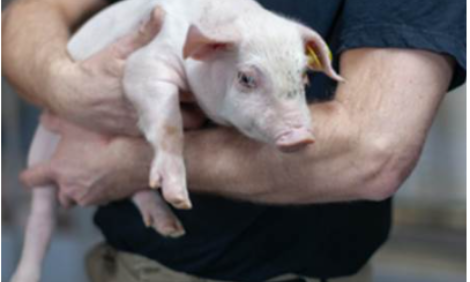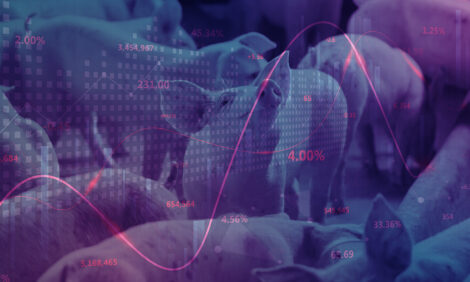



Water Intake and Wastage by Grower/finisher Pigs at Nipple Drinkers
By Yuzhi Li and Harold. W. Gonyou for the Prairie Swine Centre - The water intake of pigs is not well known since a large amount of water is wasted from drinkers. A study was conducted to determine water intake and wastage by grower/finisher pigs at nipple drinkers.
Summary
Actual water intakes of growing and finishing pigs are 4.0 and 5.9 l/d, respectively. The pigs wasted 25% of the water flowing from the nipple drinkers. High nipple flow rates increase water spillage of pigs.
Introduction
Among nutrients, water is required in the greatest amount but has received the least attention. Water intake of grower/finisher pigs has been reported to range from 1.9 to 6.8 l/d, depending on body weight and feed intake. However, most ‘water intake’ reported in the literature is water disappearance from drinkers, including water wastage, rather than water actually consumed by the animal. A study was conducted to determine actual water intake and wastage of grower/finisher pigs at nipple drinkers. The effect of nipple flow rate on water spillage was also included in the study.
Experimental procedures
Six pens of eight pigs were tested at two stages, mean body weight of 53±5 kg for growers and 72±6 kg for finishers. The pigs were fed pelleted feed ad libitum at room temperatures of 20~25oC. The nipple drinker in each pen was 5 cm higher than the shoulder height of the smallest pig. Daily feed intake, water intake, and water wastage in each pen were measured at a nipple flow rate of approximately 700 ml/min. Drinking speed and water spillage were assessed for 4 pigs in each pen after 4 h without water, at nipple-flow rates of 651, 1003, 1226 and 2080 ml/min.
Results and discussion
 Water intakes (disappearance – wastage) of the growers and finishers were 4.0 and 5.4
l/day, respectively (Table 1). When expressed in terms of feed intake, water intakes at
the two stages were identical. Water wastage was 1.3 and 1.9 l/day for the growers and
finishers, respectively, accounting for 25% of the total water disappearance for both
growers and finishers. This is lower than what (40~60%) has been estimated on
commercial farms. Proper height and flow rate of the nipple drinkers in the current study
could contribute to the improvement in water wastage. Drinking speed of pigs was
increased to 1422 ml of actual water intake/min at the nipple flow rate of 2080 ml/min
(Fig. 1). Although the pigs increased drinking speed, water spillage was higher at the
high flow rate than at the low flow rate (23.2% at 2080 ml/min vs. 8.6% at 650 ml/min,
Fig.2).
Water intakes (disappearance – wastage) of the growers and finishers were 4.0 and 5.4
l/day, respectively (Table 1). When expressed in terms of feed intake, water intakes at
the two stages were identical. Water wastage was 1.3 and 1.9 l/day for the growers and
finishers, respectively, accounting for 25% of the total water disappearance for both
growers and finishers. This is lower than what (40~60%) has been estimated on
commercial farms. Proper height and flow rate of the nipple drinkers in the current study
could contribute to the improvement in water wastage. Drinking speed of pigs was
increased to 1422 ml of actual water intake/min at the nipple flow rate of 2080 ml/min
(Fig. 1). Although the pigs increased drinking speed, water spillage was higher at the
high flow rate than at the low flow rate (23.2% at 2080 ml/min vs. 8.6% at 650 ml/min,
Fig.2).
Implications
Growing and finishing pigs waste 25% of water from well-managed nipple drinkers. It seems that water wastage could be reduced by properly adjusting nipple height and flow rate.
Acknowledgements
Funding for this project was provided by an NSERC/AAFC grant. Strategic program
funding was provided by Sask. Pork, Alberta Pork, Manitoba Pork and Saskatchewan
Agriculture and Food Development Fund.

*Least square means (n=6). NS=no significant difference (P > 0.05).
Fig.1. Drinking speed of grower/finisher
pigs at different nipple flow rates

Fig. 2. Water wastage of grower/finisher
pigs at different nipple flow rates

Source - Prairie Swine Centre - February 2004








